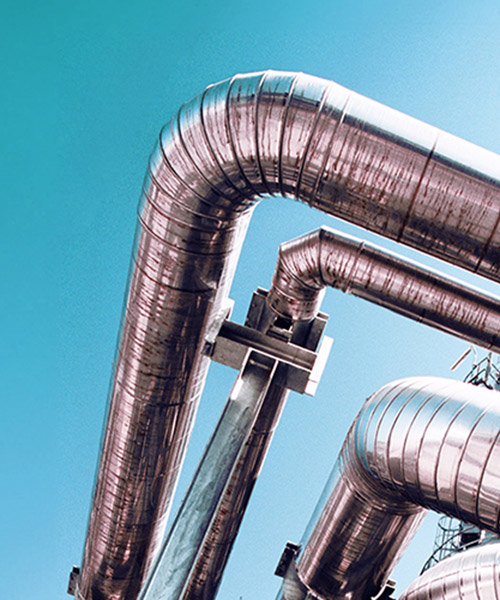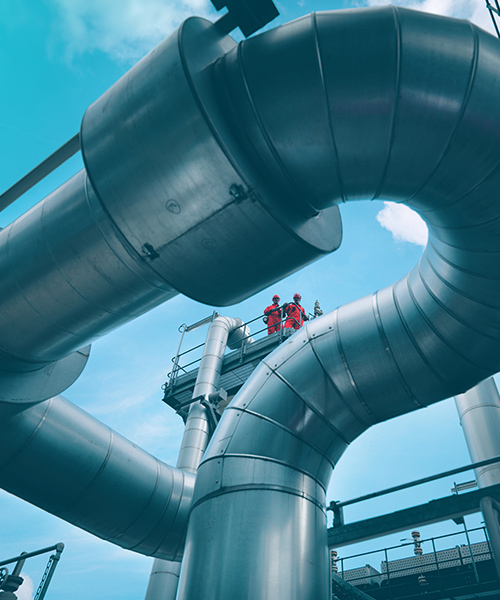April 22, 2024 • 5 min read
CCUS: understanding the challenges and opportunities for the cement industry
The Global Cement and Concrete Association’s members have committed to zero-carbon concrete by 2050. So, what decarbonization pathways are available?
“There’s a wide range of decarbonization options. From renewable powered cement plants to more efficient design, construction and circular economy practices such as mineralization and smart crushed aggregates,” says Gary LeMaire, Senior Director – CCUS.
However, the calcination process to produce clinker – the binder in many cement products – means that a significant proportion of carbon emissions cannot be avoided.
“Around two-thirds of CO2 emissions from cement production comes from chemical process emissions, with the rest energy related,” says LeMaire.
“Cement producers can make incremental improvements through energy and fuel selection and efficiency improvements. But achieving net zero cement, at pace and scale, without CCUS is nearly impossible.”
CCUS is a key part of decarbonization strategies across the cement industry. But so far, deployment is falling short.
“Successful deployment of CCUS will involve integrating globally dispersed skills and resources across previously separate disciplines and sectors. From cement, power and water to chemicals and refining. Moving beyond traditional silos and sharing infrastructure with other industries.
“Cement producers know the importance of CCUS. But that doesn’t mean applying and integrating carbon capture into their operations is straightforward. And in many cases, the challenge lies in not knowing where to start,” he adds.
Finding the optimal technology solutions
Technology selection is a common complexity for many cement producers.
“Carbon capture technologies – from amine scrubbing to membrane-assisted CO2 separation – have widely differing costs, risks, energy demands and effects on manufacturing.
“For example, some involve putting a standalone capture unit at the tail end of the production line, while others would involve retrofitting kilns to embed carbon capture within the entire production process.
“Some can seamlessly slot into existing production processes while others would involve a fundamental overhaul and are only be suitable for new build plants,” continues LeMaire.
Carbon capture technologies must also be chosen and configured to maximize ease of adoption.
“Whether it’s exploring the feasibility of retrofitting and the available physical space to assessing the impact of different technologies on the production process. Factors such as the availability of water supply, steam and electricity, nearby CO2 storage capacity must be considered, to ensure minimum disruption and avoid risks.”
The best approach depends on the site
Storage and transportation options also vary from site to site based on the proximity to infrastructure such as CO2 pipelines or storage hubs.
“Transporting and storing vast quantities of cement production emissions without prohibitive costs will require collaborating with cross sector industrial clusters to create centralized hubs,” says LeMaire.
“And a technology neutral approach is important in making sure the optimal mix of CCUS solutions customized to each cement plant’s particular production processes, flue gas compositions, energy use, physical layout and proximity to transportation and storage infrastructure.
“Optioneering is also essential to find the most effective, cost competitive, and efficient solutions for each plant.”
Forming partnerships to make CCUS projects viable for the cement industry
To deploy CCUS at scale, the cement industry will have to transform the way it collaborates with other industries. In particular, the energy sector.
“There needs to be an unprecedented effort to break down traditional silos between sectors and disciplines,” he says.
“Instead of a carbon capture unit operating in isolation from the rest of the production process, all relevant specialisms must be brought together at design phase. This will ensure a holistic implementation considering all the costs and risks.”
Cement players could also share existing infrastructure with other sectors such as power or oil and gas, to provide more cost effective transportation and storage.
“There’s an opportunity for cement producers to work with the oil and gas industry to repurpose pipelines, wells and depleted reservoirs for CO2 transportation and storage.
“In other locations, it might mean partnering with multiple companies to form industrial clusters to create centralized hubs, simultaneously decarbonizing multiple industries,” continues LeMaire. “A similar concept is being adopted at scale in the hydrogen industry, particularly in the US.
“These hubs could see industrial emissions captured at a large scale, and then efficiently transported and stored. This not only reduces collective carbon footprints but also bolsters the long term business case for the stakeholders, potentially safeguarding against potential future increases in carbon pricing.
“Utilizing shared infrastructure would reduce collective costs while also helping to scale CCS delivery faster.”
Drawing on expertise from other sectors
LeMaire also suggests there will be a need to bring skills from different industries together to develop and deliver projects.
“Organizations with a strong heritage in energy to chemicals could help accelerate deployment of CCUS and alleviate projected skills shortages, as part of diverse consortiums.
“For example, we’re partnering with Mitsubishi Heavy Industries (MHI) Group to help develop the first carbon capture enabled cement works in the UK at Heidelberg Materials’ cement plant in Padeswood, North Wales,” says LeMaire.
“This is one of several carbon capture projects we’re collaborating with MHI Group on. And the Padeswood project itself is a key establishing project within the HyNet industrial cluster, a large consortium of industries from power to refining.
“This FEED stage collaboration is a key example of the bringing together of cross sector expertise. And signals the growing movement towards industrial clusters in helping to accelerate the deployment of CCUS projects for decarbonization.”
Commercial challenges for decarbonized cement
But despite these opportunities, the high costs associated with CCUS remain the biggest key factor in the slow adoption of carbon capture across the cement sector.
“It’s unknown whether global market demand for lower carbon cement will support the increased cost of production. The cost of cement production is about USD 30 to 80 per tonne unabated, and about USD 60 to 130 per tonne decarbonized, so that's roughly double the cost,” continues LeMaire.
“With the introduction of the European Union Taxonomy, three-quarters of cement plants in the EU are at risk of not aligning with the emissions criteria for sustainable activities risking their licenses to operate and future commercial viability.
“Currently, the cement industry in the UK receives CO2 allowances for free, but under anticipated reform, at least half of those will need to be paid by 2030. The phase out of the free allowances is scheduled to begin in 2026, and it’s estimated that the cumulative cost to the cement industry by 2030 could total €13 billion.”
Reducing the costs of CCUS projects
That being said, the reality for cement producers is that CCUS remains the only affordable and scalable decarbonization solution available.
“Eventually economies of scale balance out. If we look at the power sector, in the last decade alone, the price of solar power has decreased by almost 90 percent,” says LeMaire.
“And costs for CCUS will eventually reduce also. Beyond 2030, the cost of carbon capture is projected to decrease significantly due to an increase in operational CO2 storage hubs, improvements to the efficiencies in capture capacity, and advancements in modularized design approaches.”
A path forward for the cement industry
So, while right now carbon capture may remain an expensive option, for the cement industry it’s the only tried, tested and ready to use decarbonization pathway.
“Decarbonizing the cement industry won't be without its challenges and complexities, but it is possible through the advancement of CCUS technologies,” adds LeMaire.
“Cement will play a vital role in building the infrastructure and energy systems needed for a net zero world. So as demand continues to grow, decarbonization of the cement industry must remain a priority. And accelerating the adoption of CCUS across cement production along with it.”





